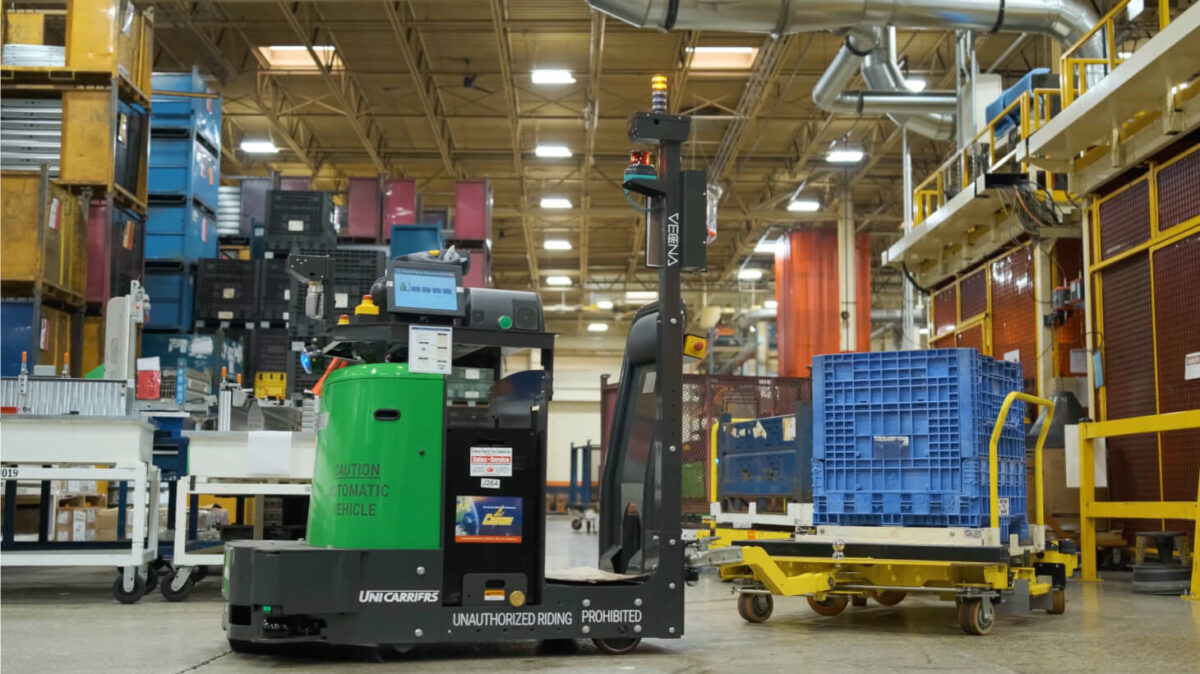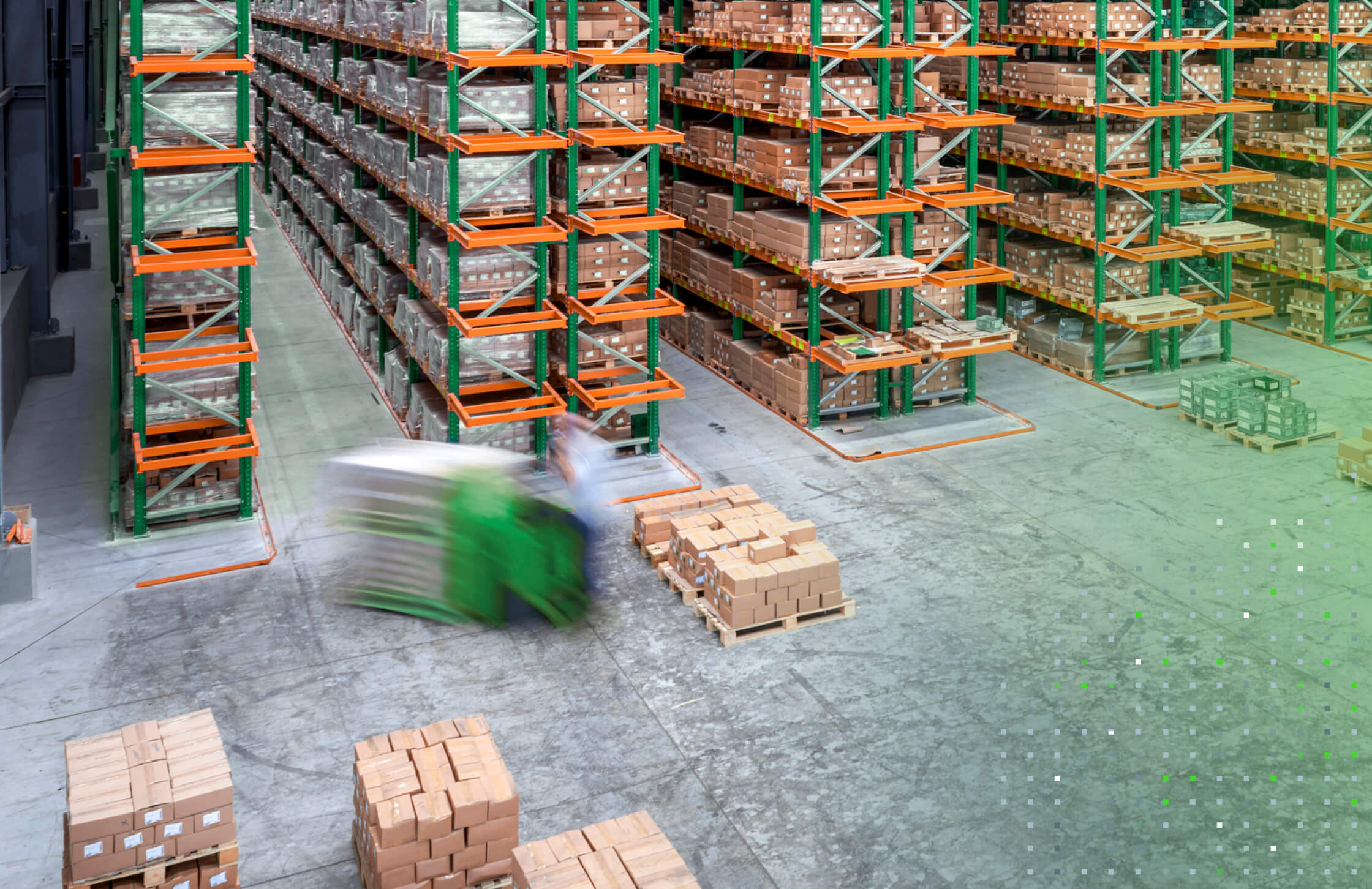What is an automated warehouse?
An automated warehouse can provide a wide range of benefits for businesses that operate a warehouse or distribution center that include increased efficiency, reduced labor costs, improved inventory management, increased safety, scalability, 24/7 operation, improved accuracy, reduced costs, and increased overall productivity. While we’ve yet to find a silver bullet for the complex challenges hitting warehouses and distribution centers these days, an automated warehouse is quickly becoming the next best thing.
Labor shortages currently make it difficult to find and retain skilled workers. The rise of direct-to-consumer sales—now 17% of all online sales in the U.S.—is increasing the volume and variety of goods handled in warehouses and supply chain issues; well, it’s hard to meet the demand for fast delivery when your inventory isn’t what it needs to be.
“Direct-to-consumer sales are now 17% of all online sales in the U.S.”
KPMG
Automation offers a new kind of resilience when facing these challenges by reducing the dependence on a specific group of employees and increasing your operational efficiencies— helping you rapidly adapt to the fast-paced, rising demand.
Implementing the right automation solution is often an unfamiliar task, though. It’s not a road many have walked, and differing opinions on how you should do it, paired with the fear of a high-cost, lengthy deployment, can make it look unappealing.
Enter the Vecna “From No Bot to Robot” approach. It’s the 5 steps to an automated warehouse that get you started immediately and at scale within 12 months of your initial deployment.

Step 1: Assess
We first pinpoint the issues within your supply chain network and match them with solutions on the market, focusing on things like inventory levels, where most of your labor is allocated, and so on. Then, using this information, we identify a scalable segment of your network where automation would be most beneficial, develop a specific use case, and select a solution that will show a solid return on investment.
Inspiring this are use cases, and challenges we know can be solved through automation. Starting with a proven solution takes much of the guesswork and worry out of the equation and gives you the confidence to know your initial deployment will succeed.
Step 2: Plan
After identifying the appropriate mobile robot type for your workflows, we assess how the robots integrate with your team, facility, and systems. We collect data such as CAD drawings, customer routes, travel distances, and throughputs. This information determines the number of robots needed for each workflow or route.
We then establish success criteria among stakeholders and test the robots in real-world environments to ensure they meet expectations. Instead of starting with one or two robots, we suggest starting with at least three to better understand traffic and interactions between the robots and human workers.
Keep in mind that multiple mobile robots don’t mean more capital expenditure than you initially expected. Our Robots as a Service (RaaS) model means you can quickly deploy your initial fleet without a significant upfront cost and can scale or upgrade as you need for one low annual fee.
Step 3: Deploy
During the deployment, we not only install the robots but also train and onboard local staff to ensure they feel confident in using them, which promotes the adoption and successful operation of the robots. Our deployment process follows a six-step approach that aligns with a production use case that directly contributes to business value. Those steps are listed below:
Planning: we hold a kickoff meeting to review the concept of operations and plan for any necessary IT or WMS (warehouse management system) integration.
Mapping: the robots are shipped to the site, and during installation, we collect a map of the floor through the robots.
Configuration: we set up the network, work on the map collected in step 2, and prepare for on-site installations and training.
Installation: we tune and test the robots and conduct multiple training sessions. We also involve the PCC (Pivotal™ command center team), so they understand the process and can easily take over after go-live.
Staff preparation: we prepare the site staff for the process after go-live, involve the PCC, and conduct mock go-live scenarios and exception training.
Support: we provide 24/7 support and use Pivotal™ Insights to review site data. We also continue to make software improvements as needed.
It’s important to note that deploying robots is more complex than just dropping them off and expecting everything to work perfectly. We have a roadmap in place to make the deployment process as smooth as possible and involve customer success teams to help clients understand every aspect. After go-live, we have weekly customer calls to ensure everyone is on the same page and everything is running as it should.
Step 4: Learn
During the deployment process, we actively involve both floor staff and senior management to encourage open communication and address any concerns. We schedule multiple training sessions to ensure all staff are adequately trained and comfortable with the robots and system.
Investing the time to get your employees onside and offering them the opportunity to train and build their skillset around this technology can help them understand the personal and organizational benefits, making them feel more invested in the process and leading to more positive results.
Once the robots are in production and go-live has been achieved, we transition to our customer success managers, who provide ongoing attention and support. We conduct regular check-in meetings where we review robot performance metrics, address any outstanding issues or topics of discussion, and work closely with our 24/7 support team PCC to monitor system performance and ensure it meets expectations.
Step 5: Scale
When introducing automation to multiple facilities or expanding automation within one facility, it is beneficial to use a pilot site as a starting point to understand where similar automation can be implemented in your network.
We suggest developing a centralized automation strategy from the beginning to plan the initial rollout and help determine which use cases to prioritize next. Additionally, utilizing the pilot site as a showcase or demonstration site can allow all stakeholders who aren’t yet familiar with the robots and their functionality a chance to see them in action. This helps reduce their wariness while increasing adoption and allowing these plant managers and executives to observe the successful deployment and prepare for their future rollouts.

The advantages of an automated warehouse
The transformation into an automated warehouse brings forth a multitude of strategic advantages that align perfectly with the needs of modern businesses grappling with the challenges of a dynamic market landscape. From enhancing operational efficiency to significantly reducing labor costs, the benefits of automating warehouse operations extend beyond mere cost savings, offering long-term sustainability and competitive advantage.
Increased operational efficiency and productivity
Automated warehouses streamline processes through the use of technologies such as AGVs, robotic picking systems, and advanced sorting solutions. This automation reduces the time taken to execute tasks like picking, packing, and shipping, allowing for a faster turnaround and higher throughput. The precision and speed of automated systems not only boost productivity but also improve the overall efficiency of warehouse operations. Furthermore, automation enables a 24/7 operational capability without the fatigue and performance inconsistencies associated with human labor, ensuring a continuous output that can keep pace with demand spikes and seasonal peaks.
Enhanced accuracy and reduced costs
One of the critical advantages of an automated warehouse is the significant reduction in errors. Automated systems are less prone to inaccuracies that can occur with manual processes, such as mis-picking or misplacing items, which can lead to costly errors and customer dissatisfaction. By improving accuracy, automated warehouses can reduce the costs associated with returns, rework, and inventory write-offs. Additionally, the ability to tightly control inventory with real-time data and insights helps in maintaining optimal stock levels, reducing excess inventory, and minimizing carrying costs.
Improved worker safety and job satisfaction
Automated warehouses contribute to safer working environments by taking over dangerous tasks such as moving heavy items or operating in hazardous conditions. This not only helps in reducing the incidence of workplace injuries but also lowers associated costs like compensation claims and lost workdays. Moreover, by automating mundane and repetitive tasks, employees can be reassigned to more engaging and higher-value activities, increasing job satisfaction and reducing turnover rates. This strategic reallocation of human resources emphasizes skill development and advanced roles, fostering a more motivated and efficient workforce.
Scalability and flexibility
As businesses grow, scalability becomes crucial. Automated warehouses provide the agility needed to scale operations up or down based on current business needs without the extensive lead time required to hire and train new staff. Automation technology can be configured and reconfigured to meet changing demands, new product lines, or unexpected market conditions, providing businesses with the flexibility to adapt quickly and efficiently. This scalability ensures that companies can respond to market changes with minimal disruption to their operations.
Advanced Examples of an Automated Warehouse
As the demand for faster, more efficient service rises with the growth of e-commerce, innovations in warehouse automation are becoming increasingly sophisticated. Several leading companies worldwide are employing cutting-edge automated systems, not merely to keep up with market demands but also to redefine the standards in logistics management. These advanced examples of automated warehouses demonstrate the transformative impact that state-of-the-art technology can have on traditional storage facilities, turning them into highly efficient, intelligent, and adaptable operations.
Robotics fulfillment centers
A renowned e-commerce leader has revolutionized warehouse operations with its network of robotics fulfillment centers. These facilities utilize thousands of mobile robots to transport inventory to human operators at packing stations, significantly reducing the need for manual item retrieval and enhancing order processing speeds. The robots operate under a sophisticated algorithm that optimizes their paths and ensures collaborative operation without interference, showcasing a leap in operational efficiency and worker productivity.
Automated grid system warehouses
An innovative online grocery retailer has set a new benchmark with its automated grid system known as “The Hive.” This system stores grocery items in bins within a 3D grid, with robots operating above the grid to retrieve items and bring them to human packers. This highly efficient system allows for the handling of numerous orders simultaneously, maximizing space utilization and reducing operational waste while speeding up delivery processes.
A smart warehouse
One of the largest fully automated warehouses in the world, operated by a major online retailer in China, cuts human labor by 70% through the extensive use of robotic logistics. The facility employs automated guided vehicles that handle a wide range of tasks from loading to sorting. These robots navigate autonomously and recharge themselves, showcasing a significant increase in operational productivity and accuracy.
Robotics Integration
A global logistics leader integrates various robotics and AI technologies to enhance efficiency and accuracy within its warehouses. The use of collaborative robots to aid human workers in picking and packaging tasks exemplifies the potential of synergistic human-robot collaboration. Additionally, the firm utilizes autonomous vehicles and augmented reality smart glasses to direct workers through efficient picking paths, significantly reducing error rates and improving operational speed.
Distribution centers with automated technology
A global retailer utilizes automated storage and retrieval systems in its distribution centers to bring products directly to operators, minimizing manual handling and accelerating order fulfillment. This goods-to-person technology not only boosts productivity but also improves worker safety by reducing physical strain.
A high-tech distribution hub
A leading sportswear brand leverages automation to transform its distribution hub into a responsive and sustainable operation. Automated shuttles and conveyors move products efficiently throughout the facility, which is also designed to optimize energy usage and minimize waste, aligning automation with environmental sustainability.
These examples underscore the transformative potential of automation in the warehousing sector. By harnessing robotics, AI, and other advanced technologies, these facilities are not only enhancing operational efficiency but are also setting new industry standards. As automation technologies continue to evolve, they promise innovative solutions that will further revolutionize warehouse operations, making them smarter, faster, and more responsive to global market dynamics.
This evolution is critical in addressing the ongoing challenges of supply chain disruptions, labor shortages, and the increasing volume and variety of goods that need to be moved and handled swiftly. Thus, an automated warehouse provides the essential advantage of resilience and efficiency, offering a robust solution to navigate these complexities effectively.
And, Vecna’s “From No Bot to Robot” approach is the proven automation adoption roadmap you can rely on to make your implementation a successful fit for your business—getting you quickly started today and allowing for optimal scale tomorrow.
For a more in-depth review and discussion about Vecna’s approach to deploying warehouse automation, watch our multi-part From No Not to Robot webinar series posted to our Resource page here: https://www.vecnarobotics.com/resource-filtering/?filter-resource-type=webinar
If you are ready to get started with an initial assessment, contact us today to set up an appointment with a Vecna Robotics automation expert.




